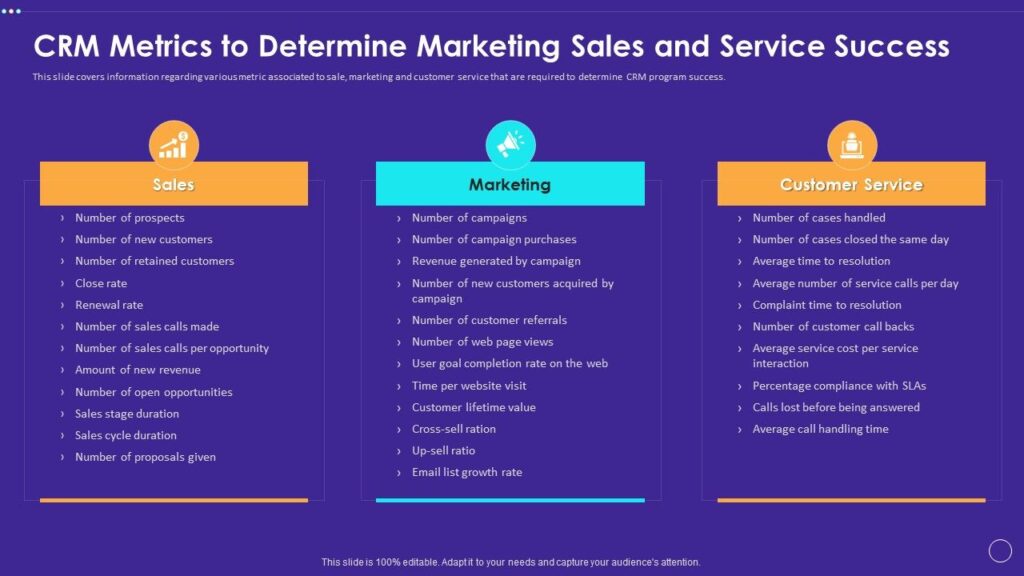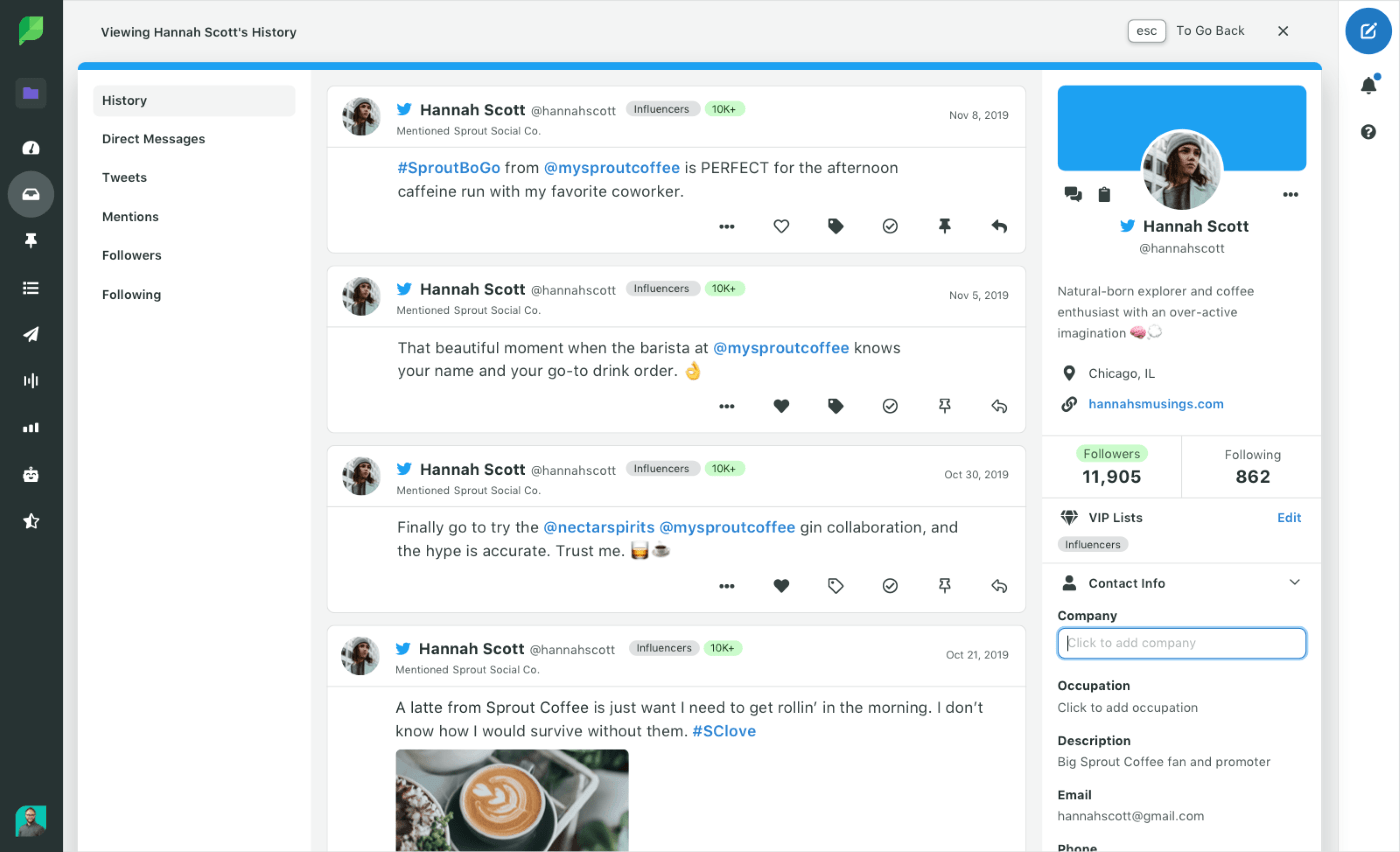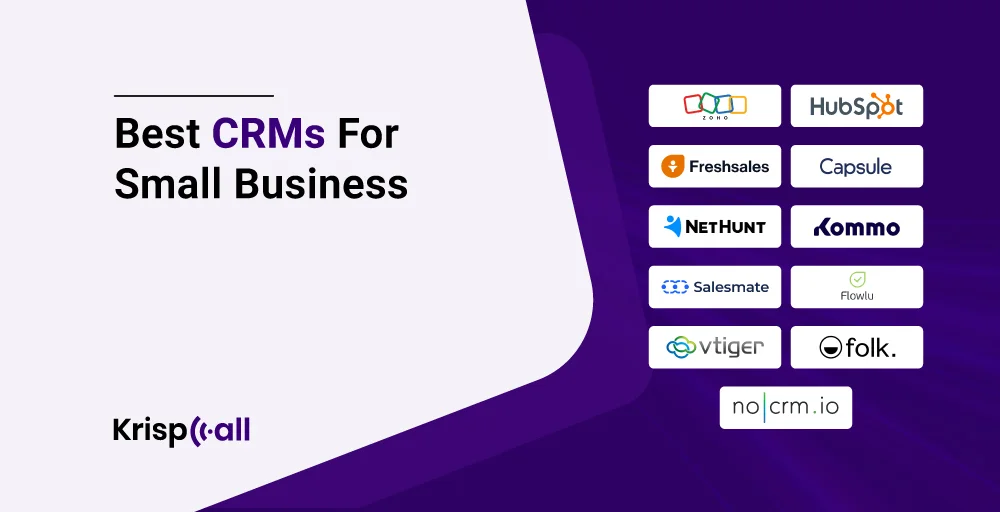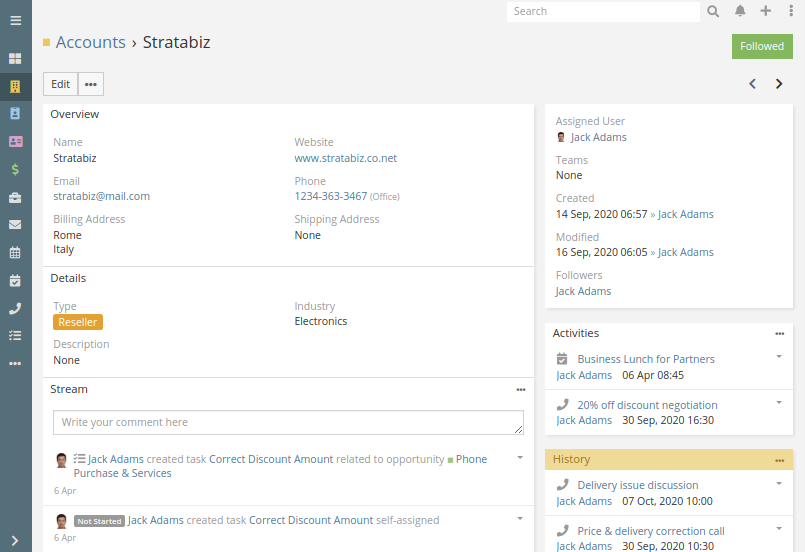
Introduction: The Power of CRM Marketing Metrics
In today’s competitive business landscape, understanding your customer is paramount. Customer Relationship Management (CRM) has evolved beyond a simple contact database; it’s become the central nervous system of modern marketing. But a CRM system is only as effective as the data it provides and the insights you extract. That’s where CRM marketing metrics come into play. These metrics are the compass guiding your marketing efforts, helping you measure success, identify areas for improvement, and ultimately, drive revenue growth. This comprehensive guide dives deep into the essential CRM marketing metrics, providing actionable strategies to track, analyze, and optimize your campaigns.
We’ll explore a wide range of metrics, from the foundational building blocks to the advanced indicators that reveal the true health of your customer relationships. Whether you’re a seasoned marketing professional or just starting to explore the world of CRM, this guide will equip you with the knowledge and tools you need to transform your data into actionable strategies.
Understanding the Core: Why CRM Marketing Metrics Matter
Before we delve into the specific metrics, let’s solidify the ‘why.’ Why is it so crucial to track and analyze CRM marketing metrics? The answer lies in the following key benefits:
- Data-Driven Decision Making: Metrics provide the evidence you need to make informed decisions, moving away from guesswork and intuition.
- Campaign Optimization: By tracking performance, you can identify what’s working and what’s not, allowing you to refine your campaigns for maximum impact.
- Improved Customer Experience: Understanding customer behavior through metrics enables you to personalize interactions and create more relevant experiences.
- Increased ROI: Measuring the return on investment (ROI) of your marketing efforts helps you allocate resources effectively and maximize profitability.
- Enhanced Sales and Marketing Alignment: Metrics foster collaboration between sales and marketing teams, ensuring a unified approach to customer engagement.
In essence, CRM marketing metrics empower you to understand your customers better, optimize your strategies, and achieve your business goals more effectively. It’s about moving beyond simply collecting data and using it to drive meaningful change.
Essential CRM Marketing Metrics to Track
Now, let’s dive into the heart of the matter: the specific metrics you should be tracking. We’ve categorized these metrics to provide a clear and organized overview.
I. Customer Acquisition Metrics
These metrics focus on the process of attracting and converting new customers.
- Cost Per Acquisition (CPA): This metric calculates the total cost of acquiring a new customer. It’s a critical measure of marketing efficiency. Formula: Total Marketing Spend / Number of New Customers Acquired. Tracking CPA helps identify the most cost-effective acquisition channels. For example, if your CPA through social media is significantly lower than through paid search, you might consider allocating more budget to social media.
- Customer Acquisition Cost (CAC): Similar to CPA, CAC provides a broader view of the cost to acquire a customer, including all associated costs (marketing, sales, etc.). Formula: Total Sales and Marketing Expenses / Number of New Customers Acquired. Understanding CAC is essential for determining profitability. If your CAC exceeds your customer lifetime value (CLTV), you’re likely losing money on each customer.
- Conversion Rate: This metric measures the percentage of leads who convert into customers. It’s a key indicator of the effectiveness of your sales funnel. Tracking conversion rates at each stage of the funnel (e.g., website visitors to leads, leads to qualified opportunities, opportunities to customers) helps identify bottlenecks and areas for improvement.
- Lead Conversion Rate: Specifically, this measures the percentage of leads generated that convert into paying customers. This is a vital metric that tells you how successful your lead nurturing efforts and sales processes are. Formula: (Number of Customers from Leads / Total Number of Leads) * 100.
- Marketing Qualified Leads (MQLs) to Sales Qualified Leads (SQLs) Rate: This metric tracks the efficiency of your lead qualification process. It shows the percentage of MQLs that are deemed qualified by the sales team. A low rate might indicate issues with lead scoring or lead nurturing.
- Website Traffic and Source: Understanding where your website traffic comes from is crucial. Track metrics like total traffic, traffic by source (organic search, paid search, social media, referrals), and bounce rate. This informs your content strategy and marketing channel allocation.
II. Customer Engagement Metrics
These metrics focus on how customers interact with your brand and products.
- Customer Churn Rate: This measures the percentage of customers who stop doing business with you over a specific period. It’s a critical indicator of customer satisfaction and retention. Formula: (Number of Customers Lost / Number of Customers at the Beginning of the Period) * 100. High churn rates signal problems with your product, service, or customer experience.
- Customer Retention Rate: This is the opposite of churn. It measures the percentage of customers you retain over a specific period. Formula: ((Number of Customers at End of Period – Number of New Customers Acquired) / Number of Customers at the Beginning of the Period) * 100. High retention rates are a sign of customer loyalty and a healthy business.
- Customer Lifetime Value (CLTV): This metric predicts the total revenue a customer will generate throughout their relationship with your business. It’s a vital indicator of long-term profitability. Formula: (Average Purchase Value * Average Purchase Frequency Rate) * Average Customer Lifespan. CLTV helps you determine how much you can afford to spend on acquiring and retaining customers.
- Customer Satisfaction (CSAT) Score: This is typically measured through surveys asking customers how satisfied they are with your product or service. A high CSAT score indicates a positive customer experience. Use surveys after key interactions like purchase, support calls, etc.
- Net Promoter Score (NPS): This metric measures customer loyalty and willingness to recommend your brand. It’s calculated by asking customers how likely they are to recommend your product or service on a scale of 0-10. NPS provides valuable insights into customer advocacy.
- Email Open and Click-Through Rates: Track the performance of your email marketing campaigns. Open rates indicate the effectiveness of your subject lines, while click-through rates show how engaging your content is.
- Social Media Engagement: Monitor metrics like likes, shares, comments, and follower growth on your social media channels. This indicates how well your content resonates with your audience.
III. Sales Performance Metrics
These metrics relate directly to the sales process and revenue generation.
- Sales Revenue: The total revenue generated from sales within a specific period. This is the most fundamental metric for any business.
- Average Deal Size: The average value of each sale. Tracking this helps you understand if you’re upselling or cross-selling effectively. Formula: Total Revenue / Number of Deals Closed.
- Sales Cycle Length: The average time it takes to close a deal. Shorter sales cycles generally lead to increased revenue. Formula: Time from Lead to Closed Deal.
- Opportunities Created: The number of sales opportunities generated. This indicates the effectiveness of your lead generation efforts.
- Win Rate: The percentage of opportunities that convert into closed deals. It’s a key indicator of sales team effectiveness. Formula: (Number of Won Deals / Total Number of Opportunities) * 100.
- Sales Velocity: This metric provides a comprehensive view of sales performance by combining several factors: number of opportunities, average deal size, win rate, and sales cycle length. It helps forecast future revenue.
- Revenue per Sales Rep: This metric helps you evaluate the performance of your sales team members and identify top performers.
IV. Marketing Campaign Performance Metrics
These metrics provide insights into the effectiveness of specific marketing campaigns.
- Return on Investment (ROI): This metric measures the profitability of your marketing campaigns. Formula: ((Revenue Generated – Cost of Campaign) / Cost of Campaign) * 100. A positive ROI indicates that the campaign is generating more revenue than it costs.
- Click-Through Rate (CTR): The percentage of people who click on a link in your marketing materials (emails, ads, etc.). It measures the effectiveness of your ad copy and calls to action. Formula: (Number of Clicks / Number of Impressions) * 100.
- Cost Per Click (CPC): The cost you pay for each click on your ads. This metric is particularly relevant for paid advertising campaigns.
- Conversion Rate (Campaign-Specific): The percentage of people who complete a desired action (e.g., filling out a form, making a purchase) after interacting with a specific campaign.
- Bounce Rate (Campaign-Specific): The percentage of people who leave your website after viewing only one page. A high bounce rate suggests the campaign is not engaging or delivering on its promise.
Analyzing and Interpreting CRM Marketing Metrics
Tracking metrics is only half the battle. The real value comes from analyzing the data and drawing meaningful insights. Here’s how to approach analysis:
- Set Clear Goals: Before you start tracking, define your marketing goals (e.g., increase website traffic, generate more leads, boost sales). This will help you prioritize which metrics to track.
- Establish Baselines: Before you implement any changes, establish baselines for your key metrics. This gives you a point of comparison to measure progress.
- Regular Reporting: Create a schedule for reviewing your metrics (e.g., weekly, monthly, quarterly). Regular reporting helps you stay on top of trends and identify issues early on.
- Segment Your Data: Don’t look at your metrics in isolation. Segment your data by customer demographics, acquisition channels, or campaign type to gain deeper insights. For example, compare the CLTV of customers acquired through different channels.
- Identify Trends and Patterns: Look for trends and patterns in your data. Are certain campaigns consistently performing better than others? Are there seasonal fluctuations in sales?
- Correlate Metrics: Look for correlations between different metrics. For example, does a higher email click-through rate lead to a higher conversion rate?
- Use Benchmarks: Compare your metrics to industry benchmarks to assess your performance relative to your competitors.
- Document Your Findings: Keep a record of your analysis and findings. This will help you track your progress over time and make informed decisions.
Leveraging CRM Data for Actionable Strategies
Once you’ve analyzed your metrics, it’s time to translate your insights into actionable strategies. Here are some examples:
- Optimize Your Sales Funnel: If your conversion rate is low at a specific stage of the sales funnel, identify the bottlenecks and address them. This might involve improving your lead nurturing process, refining your sales messaging, or offering more compelling incentives.
- Refine Your Targeting: If you notice that customers from a specific demographic have a higher CLTV, focus your marketing efforts on attracting more customers from that group.
- Personalize Customer Interactions: Use customer data to personalize your email marketing campaigns, website content, and sales interactions.
- Improve Customer Retention: If your churn rate is high, identify the reasons why customers are leaving and implement strategies to address those issues. This might involve improving your customer support, offering loyalty programs, or enhancing your product.
- Allocate Your Budget Wisely: Use CPA and ROI data to determine which marketing channels are most effective and allocate your budget accordingly.
- A/B Test Your Campaigns: Experiment with different ad copy, landing pages, and calls to action to optimize your campaign performance.
- Improve Sales and Marketing Alignment: Share your data and insights with both your sales and marketing teams to ensure they are working together effectively.
Tools and Technologies for Tracking CRM Marketing Metrics
Several tools and technologies can help you track and analyze your CRM marketing metrics:
- CRM Software: Your CRM system itself (e.g., Salesforce, HubSpot, Zoho CRM) is a primary source of data. Most CRM platforms offer built-in reporting and analytics features.
- Marketing Automation Platforms: Tools like Marketo, Pardot, and ActiveCampaign offer advanced analytics and reporting capabilities, as well as features for automating your marketing campaigns.
- Web Analytics Tools: Google Analytics is an essential tool for tracking website traffic, user behavior, and conversion rates.
- Business Intelligence (BI) Tools: BI tools like Tableau and Power BI allow you to visualize your data, create custom dashboards, and gain deeper insights.
- Spreadsheets: While not ideal for large-scale analysis, spreadsheets (e.g., Google Sheets, Microsoft Excel) can be useful for basic data tracking and analysis.
- Data Integration Platforms: Tools like Zapier and Integromat can help you connect your CRM system with other marketing tools and automate data transfer.
Best Practices for Effective CRM Marketing Measurement
To maximize the value of your CRM marketing metrics, consider these best practices:
- Choose the Right Metrics: Don’t try to track everything. Focus on the metrics that are most relevant to your business goals.
- Define Your Metrics Clearly: Ensure everyone on your team understands how each metric is calculated and what it represents.
- Automate Data Collection: Automate the process of collecting and reporting on your metrics whenever possible.
- Ensure Data Accuracy: Regularly review your data to ensure its accuracy. Cleanse your data and address any inconsistencies.
- Set Realistic Goals: Don’t set unrealistic goals for your metrics. Base your goals on your past performance and industry benchmarks.
- Provide Training: Train your team on how to interpret and use the data effectively.
- Foster a Data-Driven Culture: Encourage your team to use data to inform their decisions and make improvements.
- Regularly Review and Refine: Your metrics and strategies should evolve over time. Regularly review your approach and make adjustments as needed.
Conclusion: Embracing the Power of Data
CRM marketing metrics are essential for any business seeking to thrive in today’s market. By tracking the right metrics, analyzing the data effectively, and implementing actionable strategies, you can gain a deep understanding of your customers, optimize your marketing efforts, and drive sustainable revenue growth. Remember that the key is to be proactive, adaptable, and committed to using data to inform your decisions. By embracing the power of data, you can unlock the full potential of your CRM system and achieve your business goals.
The journey of mastering CRM marketing metrics is ongoing. Continuously learn, experiment, and refine your approach to stay ahead of the curve. The insights you glean from your data will empower you to make informed decisions, build stronger customer relationships, and ultimately, achieve lasting success.





